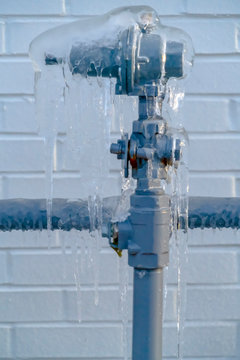We have stumbled upon the article relating to How to Prevent Your Pipes From Freezing below on the internet and thought it made good sense to share it with you in this article.

Cold weather can wreak havoc on your pipes, especially by freezing pipes. Below's how to stop it from occurring and what to do if it does.
Intro
As temperatures decline, the risk of icy pipes rises, potentially bring about costly fixings and water damage. Comprehending exactly how to stop icy pipelines is important for home owners in cool climates.
Understanding Frozen Pipes
What triggers pipes to freeze?
Pipes freeze when revealed to temperatures listed below 32 ° F (0 ° C) for prolonged durations. As water inside the pipes ices up, it broadens, taxing the pipeline walls and possibly triggering them to burst.
Dangers and damages
Frozen pipes can bring about water supply interruptions, residential or commercial property damages, and pricey fixings. Ruptured pipelines can flooding homes and create extensive structural damages.
Indications of Frozen Pipes
Identifying icy pipelines early can stop them from breaking.
How to determine icy pipelines
Seek decreased water circulation from faucets, uncommon smells or noises from pipelines, and noticeable frost on exposed pipelines.
Avoidance Tips
Insulating susceptible pipes
Cover pipelines in insulation sleeves or utilize warm tape to safeguard them from freezing temperature levels. Focus on pipelines in unheated or exterior areas of the home.
Home heating techniques
Maintain indoor areas sufficiently heated up, specifically areas with pipes. Open cabinet doors to allow warm air to flow around pipes under sinks.
Shielding Exterior Pipes
Garden hose pipes and exterior faucets
Disconnect and drain yard tubes prior to winter. Set up frost-proof faucets or cover exterior taps with shielded caps.
What to Do If Your Pipes Freeze
Immediate actions to take
If you think frozen pipes, maintain taps open up to relieve stress as the ice thaws. Utilize a hairdryer or towels soaked in hot water to thaw pipes gradually.
Long-Term Solutions
Architectural changes
Think about rerouting pipes far from exterior walls or unheated locations. Include extra insulation to attic rooms, basements, and crawl spaces.
Updating insulation
Buy high-quality insulation for pipes, attics, and wall surfaces. Proper insulation helps maintain constant temperature levels and reduces the risk of icy pipelines.
Conclusion
Preventing frozen pipelines calls for positive procedures and fast feedbacks. By understanding the reasons, indicators, and preventive measures, homeowners can secure their pipes during cold weather.
5 Ways to Prevent Frozen Pipes
Drain Outdoor Faucets and Disconnect Hoses
First, close the shut-off valve that controls the flow of water in the pipe to your outdoor faucet. Then, head outside to disconnect and drain your hose and open the outdoor faucet to allow the water to completely drain out of the line. Turn off the faucet when done. Finally, head back to the shut-off valve and drain the remaining water inside the pipe into a bucket or container. Additionally, if you have a home irrigation system, you should consider hiring an expert to clear the system of water each year.
Insulate Pipes
One of the best and most cost-effective methods for preventing frozen water pipes is to wrap your pipes with insulation. This is especially important for areas in your home that aren’t exposed to heat, such as an attic. We suggest using foam sleeves, which can typically be found at your local hardware store.
Keep Heat Running at 65
Your pipes are located inside your walls, and the temperature there is much colder than the rest of the house. To prevent your pipes from freezing, The Insurance Information Institute suggests that you keep your home heated to at least 65 degrees, even when traveling. You may want to invest in smart devices that can keep an eye on the temperature in your home while you’re away.
Leave Water Dripping
Moving water — even a small trickle — can prevent ice from forming inside your pipes. When freezing temps are imminent, start a drip of water from all faucets that serve exposed pipes. Leaving a few faucets running will also help relieve pressure inside the pipes and help prevent a rupture if the water inside freezes.
Open Cupboard Doors
Warm your kitchen and bathroom pipes by opening cupboards and vanities. You should also leave your interior doors ajar to help warm air circulate evenly throughout your home.

We hope you liked our article on Preventing and dealing with frozen pipes. Thank you for finding the time to read our post. Please take the opportunity to share this blog post if you appreciated it. We truly appreciate your readership.
Book A Service
Comments on “Advice for Preventing Frozen Plumbing in Cold Weather: Expert Tips”